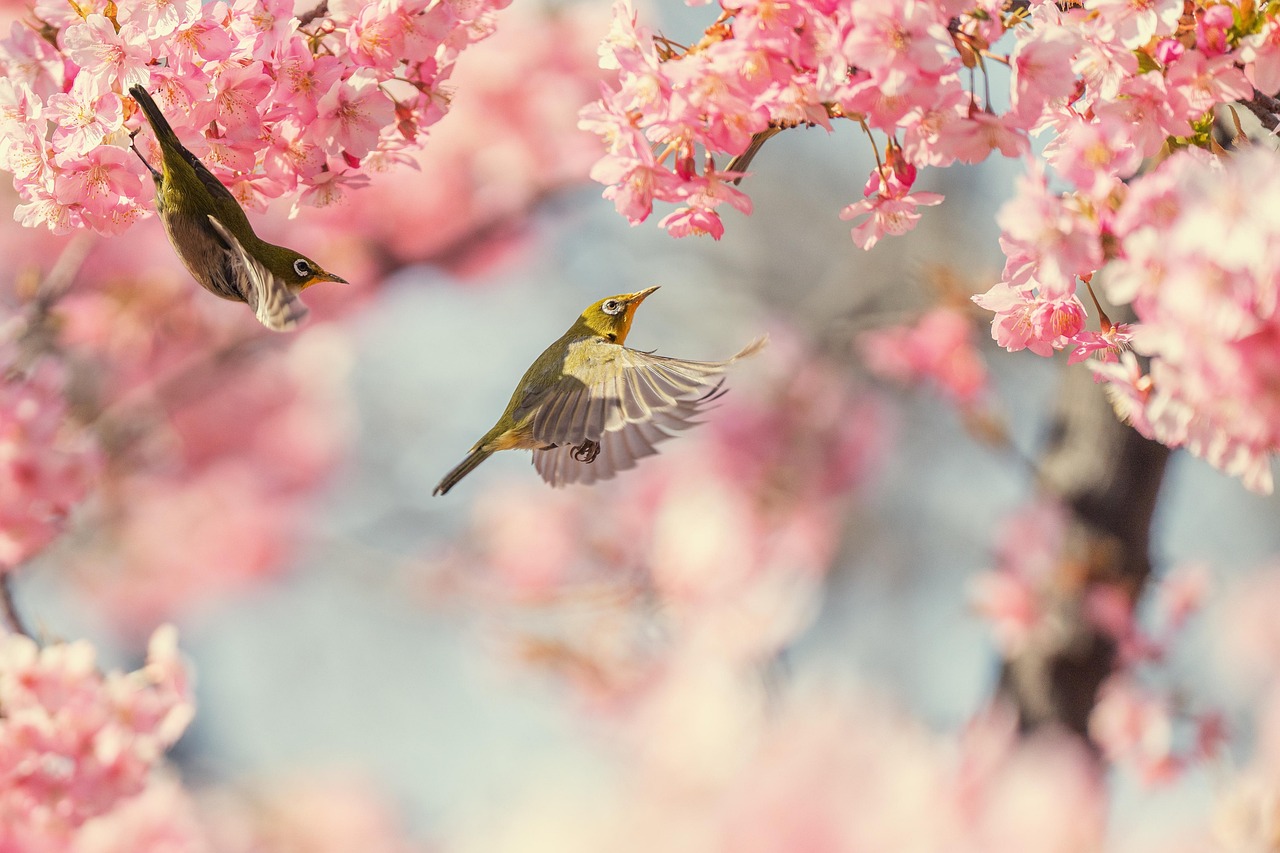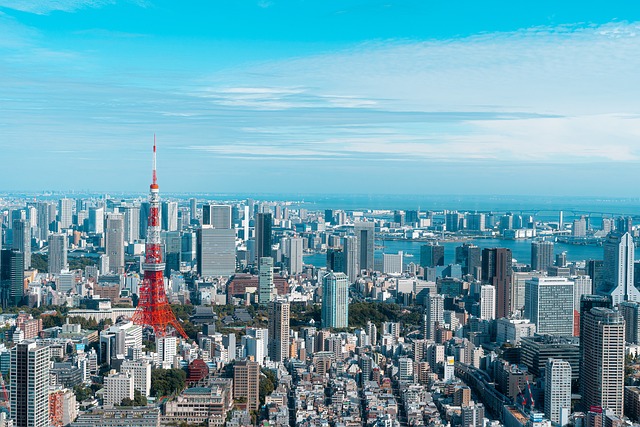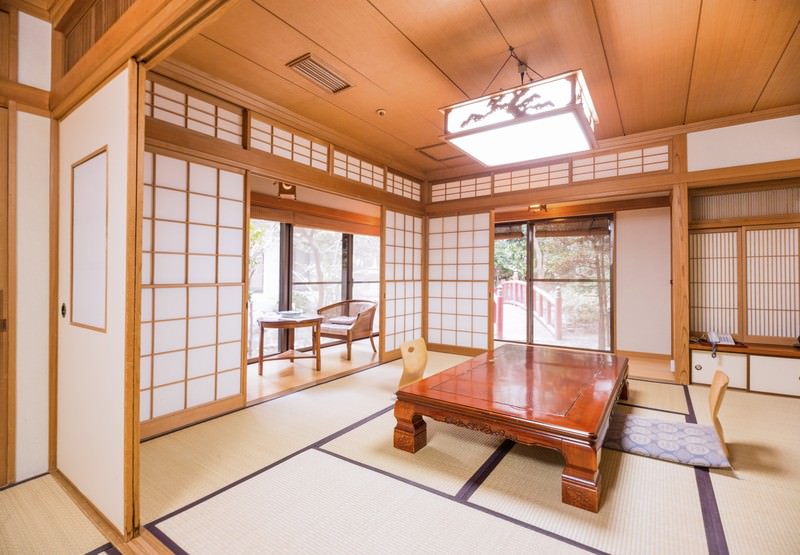उम्मीद है कि आप टोक्यो से बाहर भी ज़रूर घूमेंगेऔर जापान के दूसरे हिस्सों की सैर करेंगे। भीड़-भाड़ वाले शहर तो बस एक पहलू हैं—देश का असली खूबसूरती तो छोटे शहरों और गाँवों में छिपा है।
बहुत लोग नहीं जानते कि जापान उत्तर से दक्षिण तक करीब 2000 किलोमीटर लंबा है। मेरी जन्मभूमि Ōita, टोक्यो से लगभग 1000 किलोमीटर दूर है—यानी दिल्ली से मुंबई जितनी दूरी।
जब दूरी 100 किलोमीटर से ज़्यादा हो, तो ज़्यादातर लोग शिंकान्सेन (बुलेट ट्रेन) या घरेलू फ्लाइट लेते हैं। अगर आपका बजट थोड़ा टाइट है और समय की चिंता नहीं है, तो हाईवे बस भी एक बढ़िया विकल्प हो सकता है।
English
I hope you’ll explore beyond Tokyo and discover more of what Japan has to offer. The big cities are just one part of the country—there’s a completely different charm waiting in the countryside.
What many people don’t realize is that Japan stretches over 2,000 kilometers from north to south. For example, my hometown, Ōita, is about 1,000 kilometers from Tokyo—roughly the same distance as from Delhi to Mumbai.
When traveling more than 100 kilometers, most people take the Shinkansen (bullet train) or a domestic flight. If you’re on a budget and don’t mind a longer ride, highway buses are also a practical option.
बुलेट ट्रेन (शिंकान्सेन) क्या है? / What is the Bullet Train (Shinkansen)?
शिंकान्सेन जापान की हाई-स्पीड ट्रेन प्रणाली है, जो देश के प्रमुख शहरों को जोड़ती है। इसकी अधिकतम गति 320 किलोमीटर प्रति घंटे तक होती है।
उदाहरण के लिए, टोक्यो से ओसाका की लगभग 500 किलोमीटर की दूरी शिंकान्सेन से सिर्फ़ ढाई घंटे में तय की जा सकती है। हवाई यात्रा की तुलना में इसका एक बड़ा फायदा यह है कि ट्रेन सीधे शहर के केंद्र में ले जाती है, जिससे गंतव्य तक पहुँचना आसान और आरामदायक होता है।
English
The Shinkansen is Japan’s high-speed rail network that links major cities across the country, traveling at speeds of up to 320 kilometers per hour.
A great example is the route from Tokyo to Osaka—a 500-kilometer journey that takes only about two and a half hours. One big advantage over flying is that Shinkansen stations are located right in the city center, which makes it much easier and more convenient to reach your final destination.
बुलेट ट्रेन की सवारी कैसे करें / How to Ride the Bullet Train
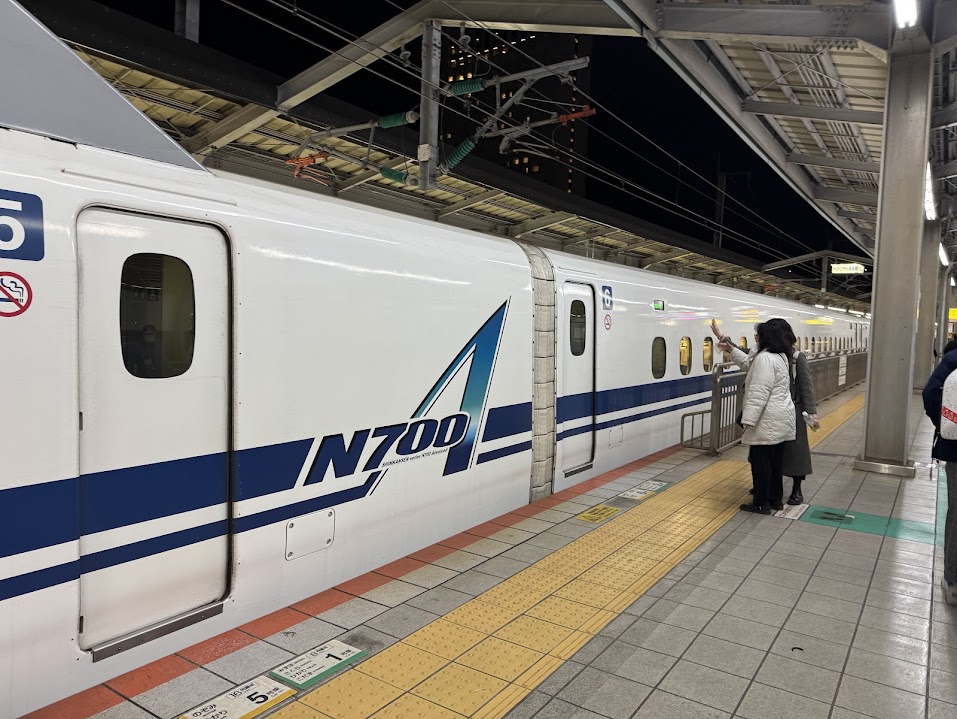
लंबी दूरी की यात्रा में आम तौर पर एक सफ़र के लिए दो टिकट लगते हैं।
- दूरी का टिकट: आप कितनी दूर जा रहे हैं, उसके लिए (गति मायने नहीं रखती)।
- स्पीड का टिकट: तेज़ ट्रेन (लिमिटेड-एक्सप्रेस/शिंकान्सेन) के लिए।
शिंकान्सेन में दोनों टिकट साथ इस्तेमाल होते हैं। गेट पर दोनों टिकट एक साथ डालें और ट्रेन में जाँच के लिए संभालकर रखें। 8ihशिंकान्सेन में दो तरह की सीटें होती हैं: आरक्षित (Reserved) और अनारक्षित (Non-Reserved)।
ध्यान दें: आजकल कई बार दोनों चार्ज एक ही टिकट पर छपे होते हैं। टिकट भले एक हो, मतलब वही रहता है—“दूरी का टिकट + स्पीड का टिकट।” ऐसी स्थिति में गेट पर वही एक टिकट डालें।
शिंकान्सेन/लिमिटेड-एक्सप्रेस का “स्पीड टिकट” लेते समय आप आरक्षित या अनारक्षित चुनते हैं।
| टिकट प्रकार | उपलब्धता |
|---|---|
| आरक्षित सीट | सीट की गारंटी रहती है |
| अनारक्षित सीट | पहले आओ, पहले पाओ के आधार पर। खाली सीट न मिले तो खड़े रहेंगे। |
छुट्टियों या भीड़भाड़ के मौसम में, ऑनलाइन आरक्षित टिकट खरीदना सबसे अच्छा होता है। इससे आपकी सीट पहले से पक्की हो जाती है।
आप स्टेशन के टिकट मशीन या टिकट काउंटर से भी टिकट ले सकते हैं।
अगर आप कई बार शिंकान्सेन से यात्रा करने का सोच रहे हैं, तो जापान रेल पास (Japan Rail Pass) लेना एक अच्छा विकल्प हो सकता है। इससे तय दिनों के भीतर असीमित(Unlimited) यात्रा की सुविधा मिलती है।
English
For long-distance trips, you usually need two tickets for one ride.
- Distance ticket: pays for how far you travel (speed doesn’t matter).
- Speed ticket: pays for the faster service (Limited Express / Shinkansen).
When using the Shinkansen, use both together. At the gate, insert both tickets at once and keep them for onboard checks.
Note: These days the two charges are sometimes printed on a single ticket. Even if you have just one ticket, it still represents a “distance ticket + speed ticket.” In that case, just insert that one ticket at the gate.
When you buy the “speed ticket” (for Shinkansen/limited-express), you choose either Reserved or Non-Reserved.
| Ticket Type | Availability |
|---|---|
| Reserved | Guaranteed seat |
| Non-Reserved | First-come, first-served; no seat guarantee; stand until a seat opens up. |
We recommend purchasing reserved seat tickets online, especially during holidays or busy travel seasons. This ensures you’ll have a guaranteed seat. You can also buy Shinkansen tickets at stations using ticket machines or by visiting the ticket office.
If you plan to travel a lot by Shinkansen, consider getting a Japan Rail Pass, which gives you unlimited rides for a fixed period.
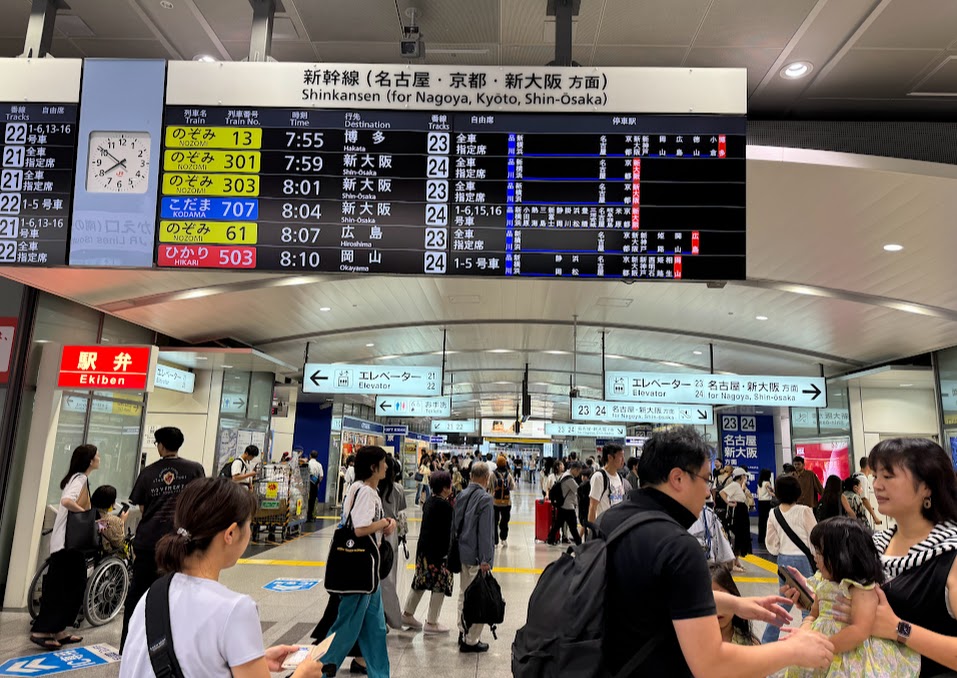

बुलेट ट्रेन में अंदर का अनुभव कैसा होता है? / What It’s Like Onboard the Bullet Train
बुलेट ट्रेन स्टेशन बड़े और अक्सर मॉल जैसे होते हैं। यहाँ आप ट्रेन में चढ़ने से पहले खाना‑पीना और गिफ्ट खरीद सकते हैं। कुछ शिंकान्सेन लाइनों में ऑनबोर्ड कैटरिंग की सुविधा भी मिलती है।
लेकिन हमारा सुझाव है कि आप पहले से ही एक बेंटो (जापानी लंच बॉक्स) खरीद लें—यह एक खास अनुभव है!
ज्यादातर शिंकान्सेन ट्रेनों में आपको मिलेंगे:
- पावर आउटलेट्स,
- वाई-फाई, और
- आरामदायक और चौड़ी सीटें।
हर डिब्बे (coach) में ये सुविधाएँ भी मिलती हैं:
- शौचालय (toilets)
- चेहरा धोने और मेकअप करने के लिए जगह
- कूड़ेदान, और
- अतिरिक्त वेंडिंग मशीन।
English
Bullet train stations are large and often feel like mini shopping malls. You can buy food, drinks, and souvenirs before boarding—or enjoy onboard catering services available on some lines.
Buying a bento (Japanese boxed lunch) before boarding is a must-try experience!
Most Shinkansen trains offer:
- power outlets,
- Wi-Fi, and
- spacious, comfortable seats.
Each car also comes equipped with:
- clean and modern toilets,
- areas to wash your face or apply makeup,
- trash bins, and
- additional vending machines.


ट्रेन में एक बार बैठने के बाद, सफ़र बहुत ही स्मूद होता है—झटके या हिचकोलों का एहसास तक नहीं होता। आप अपनी सीट पर आराम से खाना-पीना कर सकते हैं, और ट्रेन में वेंडिंग मशीन भी मौजूद होती हैं। सीट पर बैठकर जब आप ट्रे टेबल खोलकर खाना खाते हैं, तो यह जापान में ट्रेन सफ़र का खास हिस्सा बन जाता है।
English
Once onboard, the ride is incredibly smooth—you’ll barely feel a thing. You’re free to eat and drink at your seat, and there are vending machines available in the train. Once you’re seated, unfold the tray table and enjoy your meal—it’s part of the Shinkansen experience!
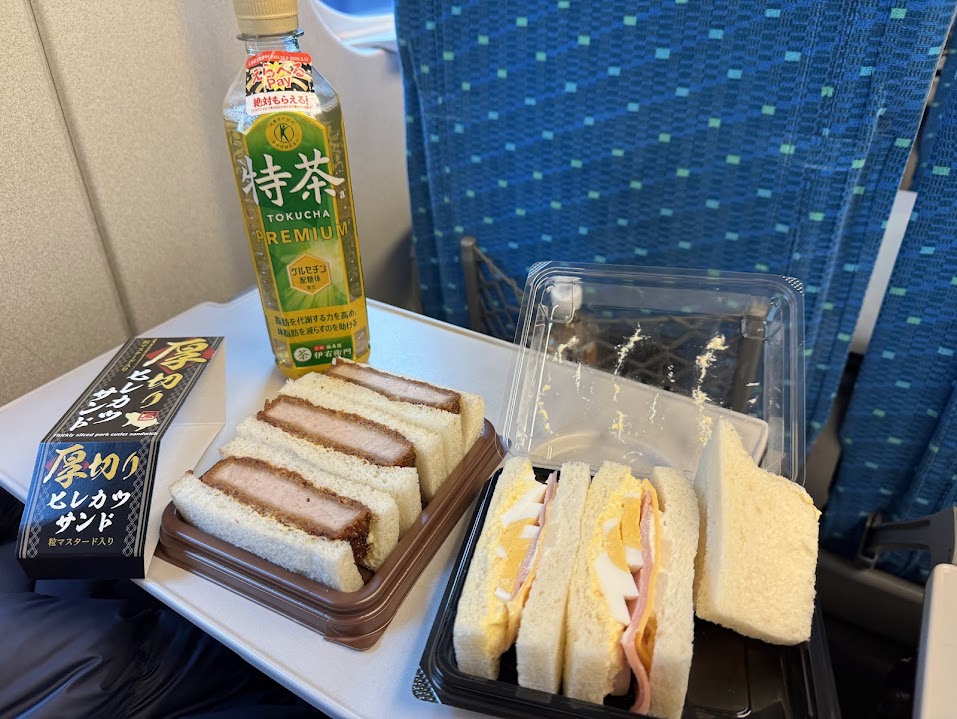
छोटे बैग ऊपर की ओवरहेड रैक में रखे जा सकते हैं। लेकिन अगर आपके पास बड़ा सूटकेस है, तो हर डिब्बे में उसके लिए स्पेशल लगेज एरिया होता है—सीट बुक करते समय उसमें भी आरक्षण कर लें।
ट्रेन से उतरते समय यह ज़रूर ध्यान दें कि आप अपना कचरा साथ ले जाएँ और सीट को वापस सीधी स्थिति में कर दें। जापान में यह एक आम शिष्टाचार है जो बहुत मायने रखता है। 😊
English
Smaller luggage can be stored in the overhead rack above your seat. For larger suitcases, most cars offer dedicated luggage spaces—just make sure to reserve a spot when you book your seat.
When it’s time to get off the train, don’t forget to take your trash and return your seat to its upright position. These little acts of courtesy go a long way in Japan. 😊
जापान में हवाई यात्रा / Flying in Japan

जापान में लंबी दूरी तय करने का सबसे तेज़—और कई बार सबसे किफ़ायती—तरीका हवाई जहाज़ है, ख़ासकर अगर आप उत्तर में होक्काइदो या दक्षिण के द्वीपों, जैसे क्यूशू या ओकिनावा, की ओर जा रहे हों।
टोक्यो में दो बड़े हवाई अड्डे हैं: हनैदा, जो शहर के क़रीब है, और नारिता, जहाँ से ज़्यादातर अंतरराष्ट्रीय उड़ानें जाती हैं। दोनों हवाई अड्डों से लगभग हर प्रीफेक्चर (prefecture) के क्षेत्रीय हवाई अड्डे के लिए घरेलू उड़ानें मिलती हैं।
घरेलू उड़ानों का किराया आमतौर पर 10,000 से 40,000 येन के बीच होता है। दो सबसे भरोसेमंद फुल-सर्विस एयरलाइंस हैं ANA और JAL, जो अपनी बेहतरीन सेवा के लिए जानी जाती हैं।
अगर आप सस्ते में टिकट पाना चाहते हैं, तो:
- जल्दी बुक करें — बेहतर होगा अगर आप तीन महीने पहले ही बुकिंग कर लें। सीज़नल सेल में कभी-कभी टिकट सिर्फ़ 5,000 येन तक भी मिल सकता है।
- बजट एयरलाइंस जैसे Peach और Jetstar भी अच्छे विकल्प हैं। शुरुआती बुकिंग में इनकी कीमतें काफी कम होती हैं, लेकिन सामान की सीमा ज़रूर चेक करें—अक्सर सस्ते किराए में बड़ा सूटकेस शामिल नहीं होता। तारीख़ नज़दीक आने पर इनकी कीमतें तेज़ी से बढ़ती हैं, इसलिए आख़िरी समय तक इंतज़ार न करें।
हवाई अड्डों पर अंग्रेज़ी में संकेत होते हैं, चेक-इन तेज़ और आसान होता है, और स्टाफ़ अंतरराष्ट्रीय यात्रियों की मदद करने का आदी है। अगर आप चेक-इन बैगेज दे रहे हैं, तो उड़ान से लगभग 90 मिनट पहले पहुँचना अच्छा रहेगा।
English
Flying is often the quickest—and sometimes even the cheapest—way to cover long distances in Japan, especially if you’re heading north to Hokkaido or south to the islands of Kyushu and Okinawa.
Tokyo is served by two major airports: Haneda, which is closer to the city, and Narita, which handles many international flights. Both airports also offer extensive domestic connections, linking almost every prefecture to its own regional airport.
Domestic fares generally range from 10,000 to 40,000 yen. The two most reputable full-service airlines are ANA and JAL, both known for excellent service.
If you’re looking for a good deal:
- Book early – ideally more than three months in advance. Seasonal sales can bring fares down to as low as 5,000 yen if you’re lucky.
- Consider budget airlines like Peach and Jetstar. They often have great early-bird prices, but be sure to check baggage limits—low fares usually don’t include large suitcases. Prices rise sharply as the departure date approaches, so booking late can mean paying nearly double for the same seat.
At the airport, signs are in English, check-in is smooth, and staff are accustomed to helping international travelers. If you’re checking baggage, aim to arrive about 90 minutes before departure.
ट्रेन या फ्लाइट कैसे चुनें / Choosing Between Train and Plane
जापान में शिंकान्सेन और घरेलू उड़ान के बीच चुनाव ज़्यादातर आपके गंतव्य, समय-सारिणी, और बजट पर निर्भर करता है।
अगर आप तोकाइदो शिंकान्सेन लाइन वाले बड़े शहरों—जैसे टोक्यो, क्योटो, और ओसाका—के बीच यात्रा कर रहे हैं, तो शिंकान्सेन बेहतरीन है। यह आपको सिटी सेंटर से सिटी सेंटर सीधे पहुँचाता है, एयरपोर्ट ट्रांसफ़र की ज़रूरत नहीं पड़ती, और सफर आरामदायक व नज़ारों से भरपूर होता है।
लंबी दूरी की यात्राओं के लिए—जैसे होक्काइडो या क्यूशू—या दूरदराज़ के द्वीपों पर जाने के लिए, उड़ान आमतौर पर ज़्यादा तेज़ रहती है, भले ही एयरपोर्ट तक आने-जाने का समय जोड़ दें।
यहाँ टोक्यो से कुछ अनुशंसित मार्ग दिए गए हैं:
English
In Japan, the choice between the shinkansen and a domestic flight largely comes down to your destination, schedule, and budget.
If you’re traveling between major cities along the Tokaido Shinkansen line—like Tokyo, Kyoto, and Osaka—the shinkansen is hard to beat. It takes you directly from city center to city center, with no airport transfers, and offers a smooth, scenic ride.
For longer journeys—such as to Hokkaido or Kyushu—or trips to remote islands, flying is often faster, even after factoring in travel time to and from the airport.
Here are some recommended routes from Tokyo:
टोक्यो → क्योटो: शिंकान्सेन लें / Tokyo → Kyoto: Take the Shinkansen
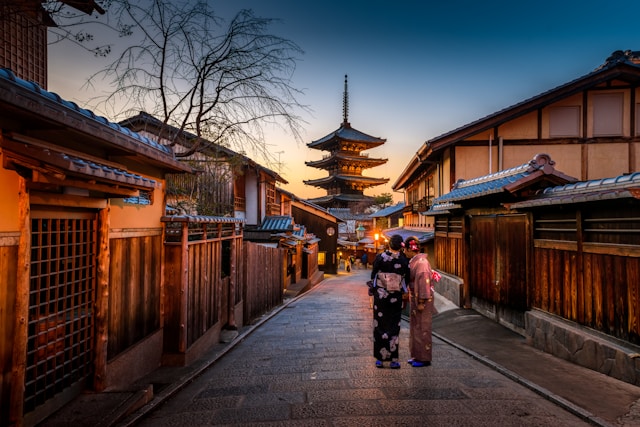
टोक्यो से क्योटो की यात्रा के लिए तोकाइदो शिंकानसेन सबसे अच्छा विकल्प है। उड़ान लेने पर, आपको पहले ओसाका पहुँचना होगा और फिर क्योटो तक ट्रेन से लगभग 1 घंटे की यात्रा करनी पड़ेगी—कुल मिलाकर लगभग 4 घंटे लगेंगे। इसके विपरीत, शिंकानसेन सीधे शहर के बीचोंबीच स्थित क्योटो स्टेशन पर पहुँचता है और केवल लगभग 2.5 घंटे लेता है, जिससे यह निश्चित रूप से बेहतर विकल्प बन जाता है।
सामान्य किराया: शिंकानसेन लगभग 15,000 येन; हवाई जहाज़ 7,000 – 30,000 येन।
English
The Tokaido Shinkansen is the clear winner here. Flying would mean landing in Osaka, then taking a train to Kyoto—about an hour—bringing the total travel time to roughly four hours. The shinkansen delivers you directly to Kyoto Station in about 2.5 hours, making it the faster and far more convenient option.
Typical fares: ~15,000 yen by shinkansen; 7,000 – 30,000 yen by plane
टोक्यो → होक्काइडो (सप्पोरो): उड़ान लें / Tokyo → Hokkaido (Sapporo): Fly
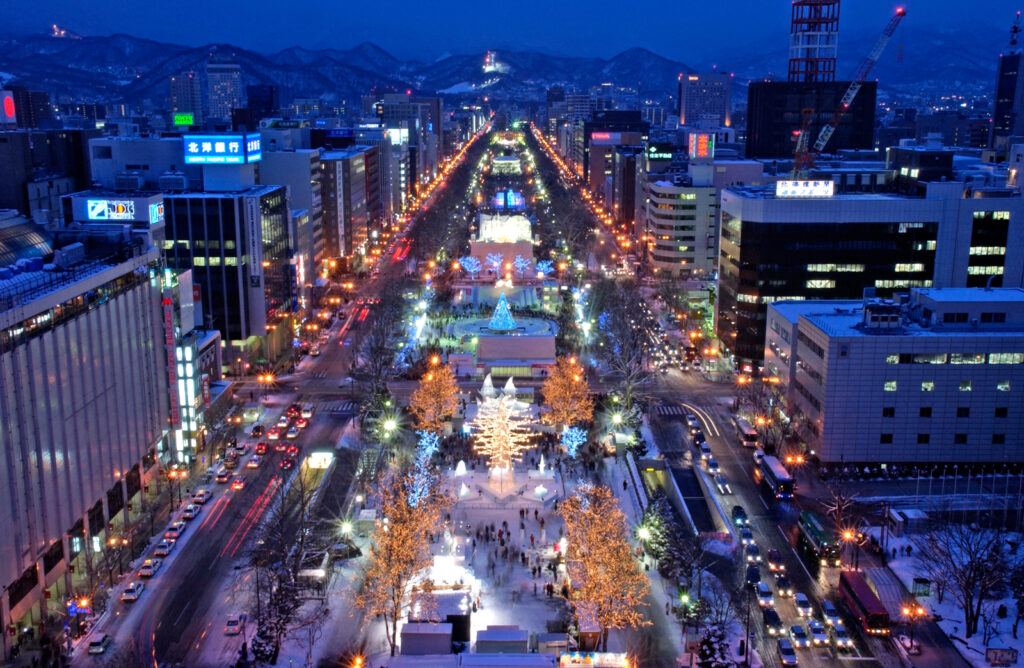
न्यू चिटोज़ एयरपोर्ट (CTS) तक की घरेलू उड़ान सबसे तेज़ विकल्प है, जिसमें लगभग 70 मिनट का उड़ान समय और शहर के केंद्र से/तक हवाई अड्डे की यात्रा में लगभग 2 घंटे लगते हैं। तुलना के लिए, होक्काइडो शिंकानसेन से शिन-हकोदाते-होकुतो पहुँचने में लगभग 4 घंटे लगते हैं, जिसके बाद सप्पोरो तक लोकल ट्रेन से और 4 घंटे की यात्रा करनी पड़ती है। शिंकानसेन आपको हवाई अड्डे के ट्रांसफर की झंझट से बचाता है, लेकिन उड़ान से फिर भी काफ़ी समय बचाया जा सकता है।
सामान्य किराया: शिंकानसेन ~30,000 येन; हवाई जहाज़ 10,000 – 40,000 येन।
English
A domestic flight to New Chitose Airport (CTS) is the fastest option, with a flight time of about 70 minutes plus roughly 2 hours to travel between the airport and the city center. By comparison, the Shinkansen takes about 4 hours to reach Shin-Hakodate-Hokuto station, followed by another 4 hours on a local train to Sapporo. While the shinkansen spares you the hassle of airport transfers, flying will still save you a considerable amount of time.
Typical fares: ~30,000 yen by shinkansen; 10,000 – 30,000 yen by plane
टोक्यो → क्यूशू: उड़ान लें (बीच-बीच में घूमना चाहें तो शिंकान्सेन) / Tokyo → Kyushu: Fly (Shinkansen if sightseeing)
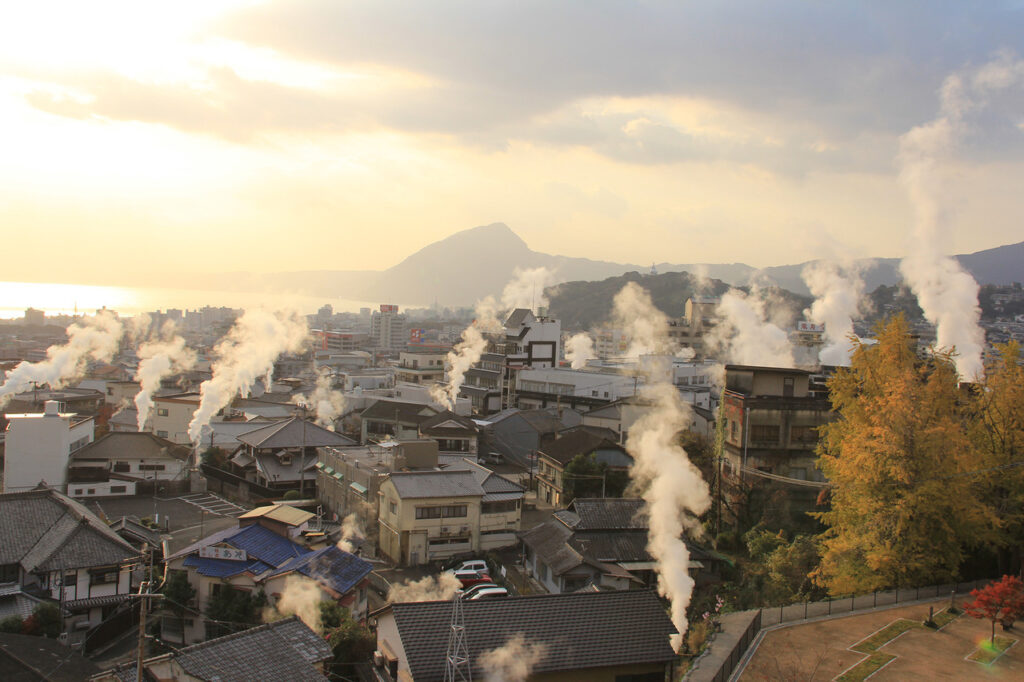
हवाई यात्रा आम तौर पर सस्ती और तेज़ होती है—लगभग 2 घंटे की उड़ान, और एयरपोर्ट से/तक शहर पहुँचने में 1–2 घंटे। LCC का किराया अक्सर लगभग ¥7,000 से शुरू होता है, जबकि ANA/JAL करीब ¥20,000 रहते हैं। शिंकान्सेन में 5 घंटे से अधिक लगते हैं।
लेकिन अगर आप रास्ते में कई शहरों पर रुकते हुए यात्रा करना चाहते हैं—जैसे क्योटो या हिरोशिमा—तो शिंकान्सेन बेहतरीन विकल्प है। Japan Rail Pass के साथ आप पास की वैधता अवधि में शिंकान्सेन और लोकल ट्रेनों में जितना चाहें सफ़र कर सकते हैं, जिससे यात्रा लचीली रहती है और रास्ते के नज़ारे भी खूब मिलते हैं।
English
Flying is generally cheaper and faster—about a 2-hour flight plus 1–2 hours to get between the airport and the city center. The shinkansen takes over 5 hours.
That said, if you want a multi-city trip—stopping in places like Kyoto or Hiroshima—the shinkansen really shines. With a Japan Rail Pass, you can ride shinkansen and local trains as much as you like during the pass period, making it ideal for a flexible, scenic itinerary.
अंतिम सुझाव / Final Tips
चाहे आप शिंकानसेन लें या विमान, पहले से योजना बनाना आपके समय, पैसे और तनाव को बचाएगा। अपनी समय-सारणी, बजट और यात्रा शैली के अनुसार सबसे उपयुक्त विकल्प चुनें—और गंतव्य जितना ही यात्रा का भी आनंद लें।
लोकल ट्रेन की सवारी कैसे करें—इसकी स्टेप-बाई-स्टेप जानकारी के लिए हमारा लेख “6. चलो अब मेट्रो पकड़ते हैं!” देखें।
English
Whether you take the shinkansen or a plane, planning ahead will help you save time, money, and stress. Choose the option that best fits your schedule, budget, and travel style—and enjoy the journey as much as the destination.
For a step-by-step guide to local trains, please see our article “6. Ready to ride the rails?”
